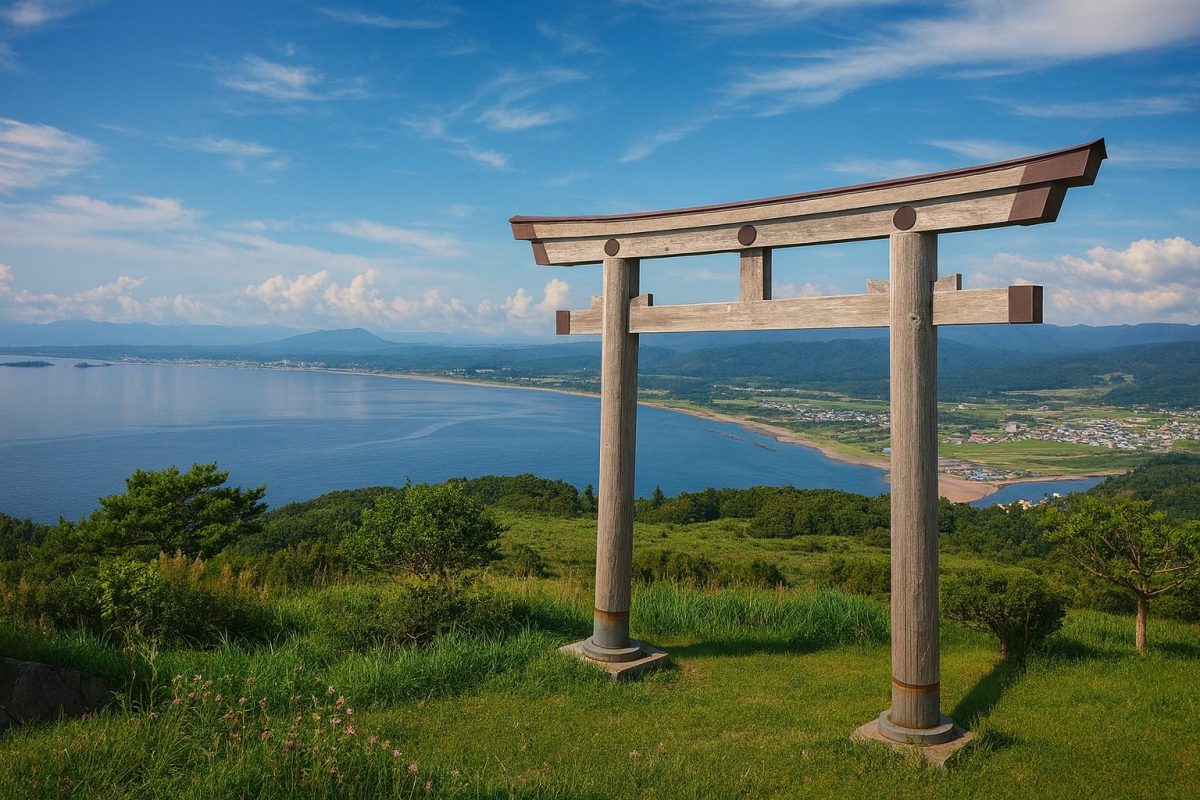| population | 4,034 peoples |
|---|---|
| area | 547.72 km² |
| population density | 7.37 peoples/km² |
Kaminokuni Town, located at the southernmost tip of the Hiyama Subprefecture in southwestern Hokkaido, is a community blessed with both rich history and natural beauty. Facing the Sea of Japan, the town has been an important site of human settlement since early times, and it played a central role in the medieval history of Hokkaido as one of the “Twelve Forts of Southern Hokkaido.” The remains of Katsuyama Castle, Eionzan Mountain, and the Amanogawa River are prominent symbols of this heritage. The climate is relatively mild compared to much of Hokkaido, thanks to the Tsushima Current, with little snowfall but frequent rain and strong winds. Agriculture, fishing, and livestock farming form the backbone of the economy, with rice, vegetables, pork, and marine products such as pollock, squid, and sea urchin as major outputs. More recently, aquaculture of abalone and sea urchin has been promoted through the “marine ranching” initiative. Combining this historical significance, natural resources, and cultural vitality, Kaminokuni Town offers visitors a unique and fascinating experience of Hokkaido.
Culture and Traditions
Kaminokuni Town has long been a crossroads of Wajin (ethnic Japanese) and Ainu culture, leaving deep marks on its traditions. During the 15th century, it was home to important fortifications such as Katsuyama Castle, making it a key base for the Kakizaki clan in their expansion across Hokkaido. The legacy of this period is preserved in historical sites, shrines, and festivals. Today, cultural heritage is also visible through traditional performing arts like the “Ishizaki-yakko” and the “Oodome Shishimai,” both preserved as intangible folk cultural properties. Festivals such as the “Eionzan Festival” in June and the “Annual Festival of Kaminokuni Hachiman Shrine” in September showcase Shinto rituals, traditional kagura dance, and historic processions. Daily life also reflects the local identity, with the Hokkaido dialect in use and community ties strengthened through seasonal celebrations. This fusion of history, Ainu influence, and agricultural-fishing traditions forms the cultural foundation of Kaminokuni, making it a distinctive and living heritage.
Local Specialties
- Abalone and Sea Urchin: Cultivated through marine ranching, these luxury seafood products are renowned for their high quality and freshness, symbolizing the blessings of the Sea of Japan.
- Pollock, Atka Mackerel, and Squid: The coastal waters provide rich fisheries resources, supporting the local diet as well as the processing industry.
- Rice and Vegetables: Fertile land and a relatively mild climate support rice cultivation and diverse vegetable farming, yielding produce with excellent flavor and freshness.
- Pork and Dairy Products: Livestock farming, including pig farming and dairy, plays an important role in the agricultural economy, with locally produced meat and dairy valued for their rich taste.
- Black Silica: A rare mineral found in the upper Amanogawa River area, known for its far-infrared radiation properties, it is used in spa and wellness facilities such as bedrock baths.
Annual Events
- Eionzan Festival (June): A summer event featuring traditional rituals and performances, attracting both locals and visitors to the scenic mountain.
- Kaminokuni Hachiman Shrine Annual Festival (September): The town’s largest festival, including kagura dances and historical processions, celebrating centuries of tradition.
- Ishizaki-yakko Performance (Summer): A vigorous traditional performance preserved by local groups, designated as an intangible folk cultural property.
- Oodome Shishimai (Autumn): A ritual lion dance passed down through generations, praying for good harvests and community safety.
- Yunotai Onsen Winter Festival (February): A seasonal event with snow lanterns and food stalls, highlighting the charm of Kaminokuni’s hot spring district in winter.
Access
- Air: The nearest airport is Hakodate Airport, with direct flights from major Japanese cities. From the airport, the town is about 90 minutes by car.
- Shinkansen: The Hokkaido Shinkansen stops at Kikonai Station, from where Kaminokuni Town is approximately 40 minutes by car.
- Ferry: Ferries connect Aomori City to Hakodate. From Hakodate, visitors can rent a car to reach Kaminokuni.
- Bus: Hakodate Bus provides service from Hakodate and Esashi to Kaminokuni, stopping at key locations such as the town hall.
- Car: Kaminokuni is accessible via National Route 228. The drive from Hakodate takes about two hours, making it convenient for road trips.
Tourist Attractions
- Katsuyama Castle Ruins – One of the Twelve Forts of Southern Hokkaido, it played a vital role in medieval trade and defense.
- Eionzan Mountain – Offers panoramic views of the Sea of Japan and the town, blending natural beauty with historical significance.
- Yunotai Onsen – A nationally designated recuperative hot spring area, providing relaxation and therapeutic benefits.
- Joukokuji Temple – Considered the oldest temple in Hokkaido, designated as an Important Cultural Property.
- Roadside Station Kaminokuni Monju – A hub for local specialties and marine products, serving as both a shopping spot and tourist base.
